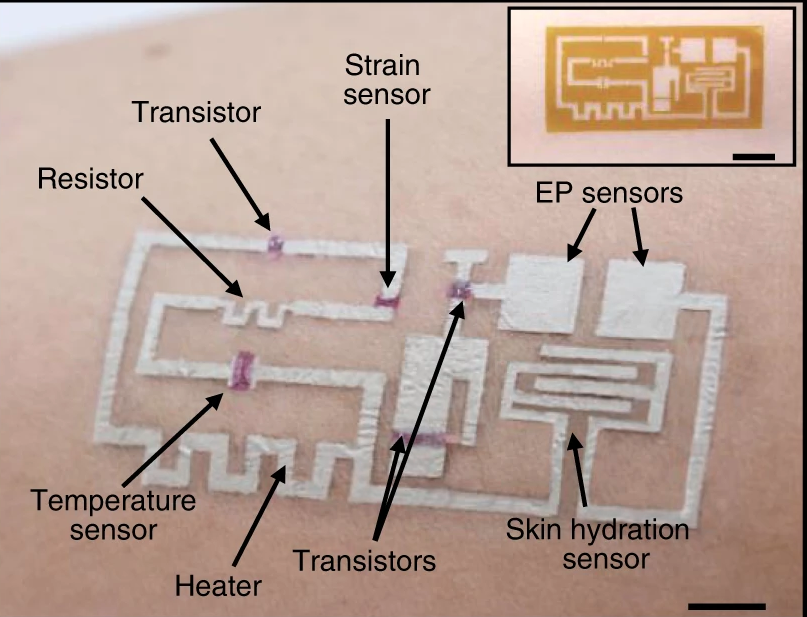Bioelectronics, the combination of biology and information processing systems, paves the way for the future of medicine. A team from the University of Houston and the University of Chicago recently developed 'drawn-on-skin electronics' (DoS) or an ink pen that can draw multifunctional sensors and circuits on the skin.

The new research published in the journal Nature Communications describes a new electronics platform that provides precise data for personalized health care. The DoS electronics are a combination of three inks which serve as a conductor, semiconductor, and dielectric. It is similar to having a wearable device that has skin sensors.
The skin offers a lot of information for doctors about the condition of their patients such as discoloration and inflammation. Although there have been many advances with wearable bioelectronics, the devices have 'generally suffer[ed] from motion artifacts leading to misinterpretation and misdiagnoses,' wrote the authors.
Monitoring the Body
While a Fitbit smartwatch can track one's activity, heart rate, and sleep quality, the drawn-on-skin electronics are much more advanced. Sensors and circuits on the skin can check heart function, temperature, and pick up other crucial physical signals to help medical experts with diagnosing and treating conditions.
Moreover, the accurate extraction of data that monitors health can help prevent disease. The electronic ink can draw several sensors that work together for collecting data that monitor skin hydration, temperature, and strain or muscle signals.
Another sensor is the pair of electrophysiological sensors that protects the drawn-on-skin electronics from motion artifacts such as rapid movement or sweat. The wearer can move freely while the electronics monitor the body's condition accurately without requiring additional equipment.
Read Also: Movie technology inspires wearable liquid unit that aims to harvest energy
Like Pen on Paper
'It is applied like you would use a pen to write on a piece of paper,' said Cunjian Yu from the University of Houston. 'We prepare several electronic materials and then use pens to dispense them. Coming out, it is liquid. But like ink on paper, it dries very quickly.'
When the drawn-on-skin electronics, in the form of liquid functional ink, dries up, it becomes soft, flexible patches. Besides monitoring the body, the DoS electronics can also stimulate accelerated skin wound healing.
Yu describes that the bioelectronics can be customized to collect various data. Since the devices do not need additional sophisticated equipment, it can be used on the battleground, he said.
The researchers also designed stencils for the DoS electronics to be easily drawn on the skin. The paper notes, 'the simplicity of the drawing process enables easy access to individuals of any background or knowledge level to create DoS electronics on demand. The authors also wrote, 'DoS electronics can be implemented as a new, simple, and easily accessible yet promising personalized bioelectronics and healthcare tool.'
Read Also: Scientists Develop Wearable COVID-19 Monitoring Tool to Catch Early Symptoms










!['Cosmic Glitch' in Einstein's Theory of General Relativity Could Be Explained in This New Scientific Tweak [Study]](https://1721181113.rsc.cdn77.org/data/thumbs/full/53435/258/146/50/40/cosmic-glitch-in-einsteins-theory-of-general-relativity-could-be-explained-in-this-new-scientific-tweak-study.jpeg)



